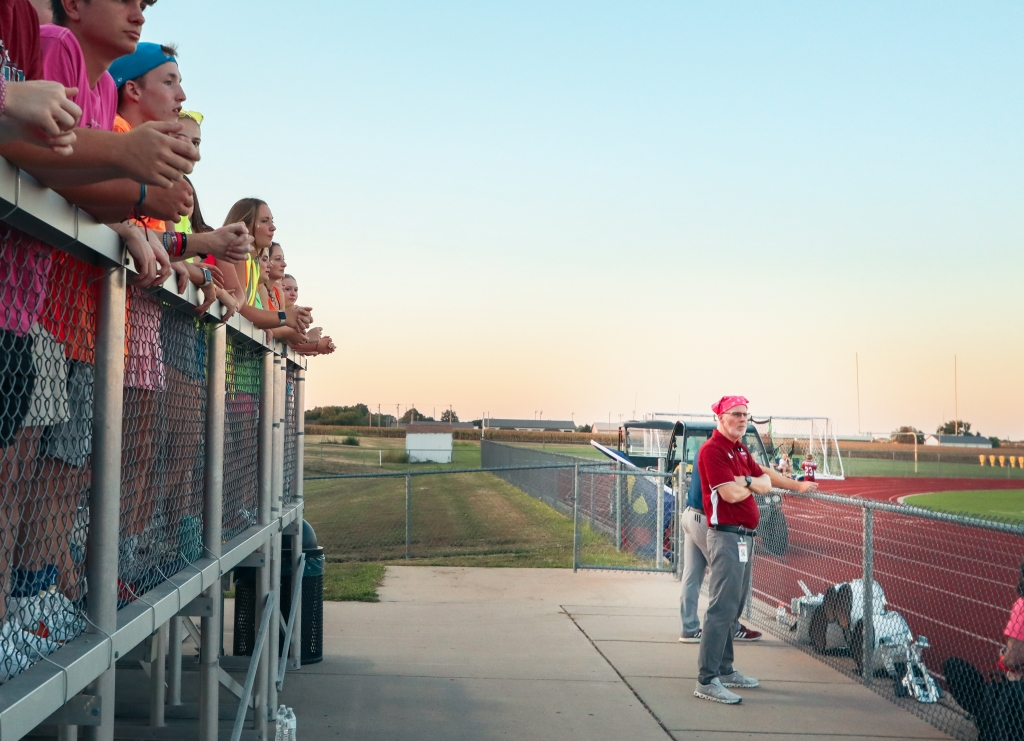Retail vs Online

STORY BY KHLOE CRAWSHAW »
We’ve all more than likely logged onto our computers and scrolled through online shops. Anything from browsing new shoes in power hour to peeking at prom dresses in 4th hour, students use online storefronts as a way to shop without leaving their seats. Even Instagram has links that are added to posts to keep people clicking and shopping, and people pull out their credit cards to avoid a dreaded social interaction with a less than happy retail worker at a mall or shopping center. But are those social interactions dying too fast? Are physical stores, also known as brick-and-mortar stores, really dying due to the online marketplace?
Retail stores have been in place for decades, with ready made clothing becoming more popular in the late 1860’s with 25 percent of all garments produced in the US were ready made. By 1890, that went up to 60 percent, with men and women alike being able to purchase their clothing right off the rack. One of the first shopping plazas to buy clothing in-stores was built in 1922 in Kansas City, and by 1951, 90 percent of clothing sold in the US was ready made and in shopping malls across the country.
Retail stores have been in place for the last century, and still affect people today. There are many chains of retail stores in the US today, with nearly every american wearing ready-made clothing from a large retail company. But, most of those ready made clothes can also be found at easy-access online stores.
These online stores are being wildly accused of ‘killing’ the in-store retail industry. An example of that is Forever 21. Forever 21, a popular store for teenagers to shop at, has recently filed for Chapter 11 bankruptcy protection and plans to close up to 350 stores worldwide. According to CNN Business, the downfall of the store has everything to do with the large boom of online shopping.
Forever 21 is just the latest to run into trouble amid the rise of online shopping that has cut foot traffic to malls and brick-and-mortar stores. High debt levels and rent costs have also burdened these traditional retailers, said CNN business. From a business standpoint, the idea of primarily online stores like Romwe and Poshmark is startling. These stores operate almost 100% online for a customer standpoint, and do not have to deal with the extra expenses of rent costs of a store in a shopping mall or outlet.
Students like Senior Allison Gladfelder think that the rise of online shopping isn’t a bad thing, necessarily.
“[Online shopping] could be a reason that stores are closing but I don’t think that it’s the main reason,” Gladfelder said. While she mentioned she does go out and shop socially, she did admit she frequently online shops.
“I online shop because I don’t like leaving my house sometimes,” said Gladfelder, “Especially if I’m sick and can’t go out during the winter.”
Online shopping has become a popular way for teenagers and adults alike to shop without leaving their homes. Amazon has been a part of our society for 25 years as a shopping outlet, but online shopping has recently taken over a large part of modern America’s consumer culture. With the budding existence of things like CyberMonday and Prime Day, other in-store sales are becoming less popular to attend.
So this raises the question: why have a storefront, when online is seemingly more popular and cheaper to maintain?
Elizabeth Kinspel, owner of Twill Trade, a clothing store located on Main Street in Eudora, shared her opinion on this.
“There are advantages and disadvantages of online storefronts,” said Kinspel, “There’s no rent or mortgage, and you don’t have employees so it is easier to manage with only one or two individuals,” she said.
“The downside is that everyone has an online shop now,” she joked, “so to be found you need to pay for online presence and ads just to be seen by customers,” She also mentioned that people shop for experiences as well as clothes when they shop retail. “The touch of the product is important, so us having a brick and mortar store is a huge benefit,” Kinspel said.
Even though the boom of the online shopping scene has negatively affected brick and mortar stores, we won’t see them going away any time soon. There are positives and negatives in both consumer models, but it is all up to the customer preference.







